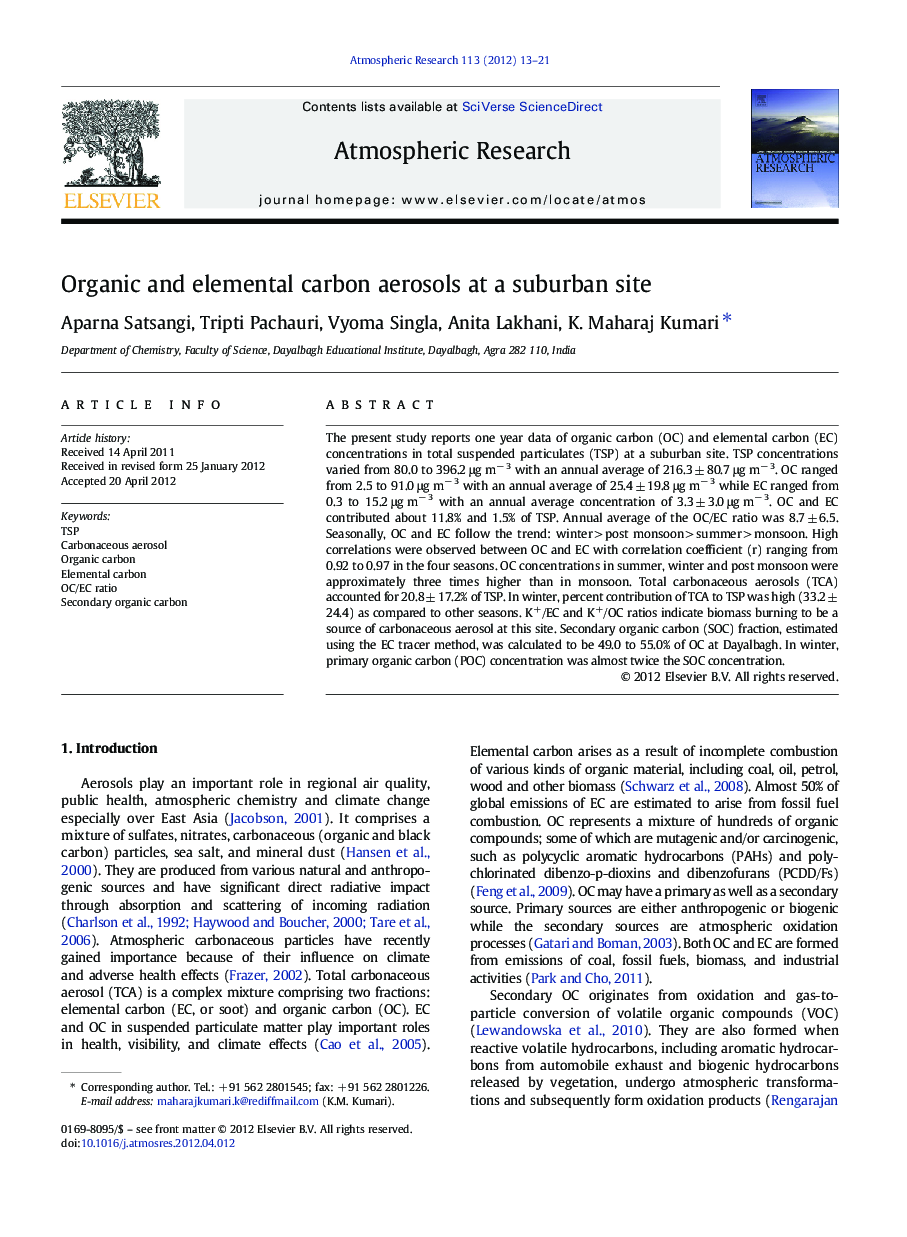| Article ID | Journal | Published Year | Pages | File Type |
|---|---|---|---|---|
| 4450191 | Atmospheric Research | 2012 | 9 Pages |
The present study reports one year data of organic carbon (OC) and elemental carbon (EC) concentrations in total suspended particulates (TSP) at a suburban site. TSP concentrations varied from 80.0 to 396.2 μg m− 3 with an annual average of 216.3 ± 80.7 μg m− 3. OC ranged from 2.5 to 91.0 μg m− 3 with an annual average of 25.4 ± 19.8 μg m− 3 while EC ranged from 0.3 to 15.2 μg m− 3 with an annual average concentration of 3.3 ± 3.0 μg m− 3. OC and EC contributed about 11.8% and 1.5% of TSP. Annual average of the OC/EC ratio was 8.7 ± 6.5. Seasonally, OC and EC follow the trend: winter > post monsoon > summer > monsoon. High correlations were observed between OC and EC with correlation coefficient (r) ranging from 0.92 to 0.97 in the four seasons. OC concentrations in summer, winter and post monsoon were approximately three times higher than in monsoon. Total carbonaceous aerosols (TCA) accounted for 20.8 ± 17.2% of TSP. In winter, percent contribution of TCA to TSP was high (33.2 ± 24.4) as compared to other seasons. K+/EC and K+/OC ratios indicate biomass burning to be a source of carbonaceous aerosol at this site. Secondary organic carbon (SOC) fraction, estimated using the EC tracer method, was calculated to be 49.0 to 55.0% of OC at Dayalbagh. In winter, primary organic carbon (POC) concentration was almost twice the SOC concentration.
► TSP concentration was high in summer as compared to winter, monsoon and post monsoon. ► Average OC and EC concentrations were 25.4 ±19.8 and 3.3 ±3.0 μg m−3. ► OC and EC showed high concentrations in winter due to increased heating sources. ► High OC/EC ratio (average=8.7 ±6.5) was observed due to biomass burning.
